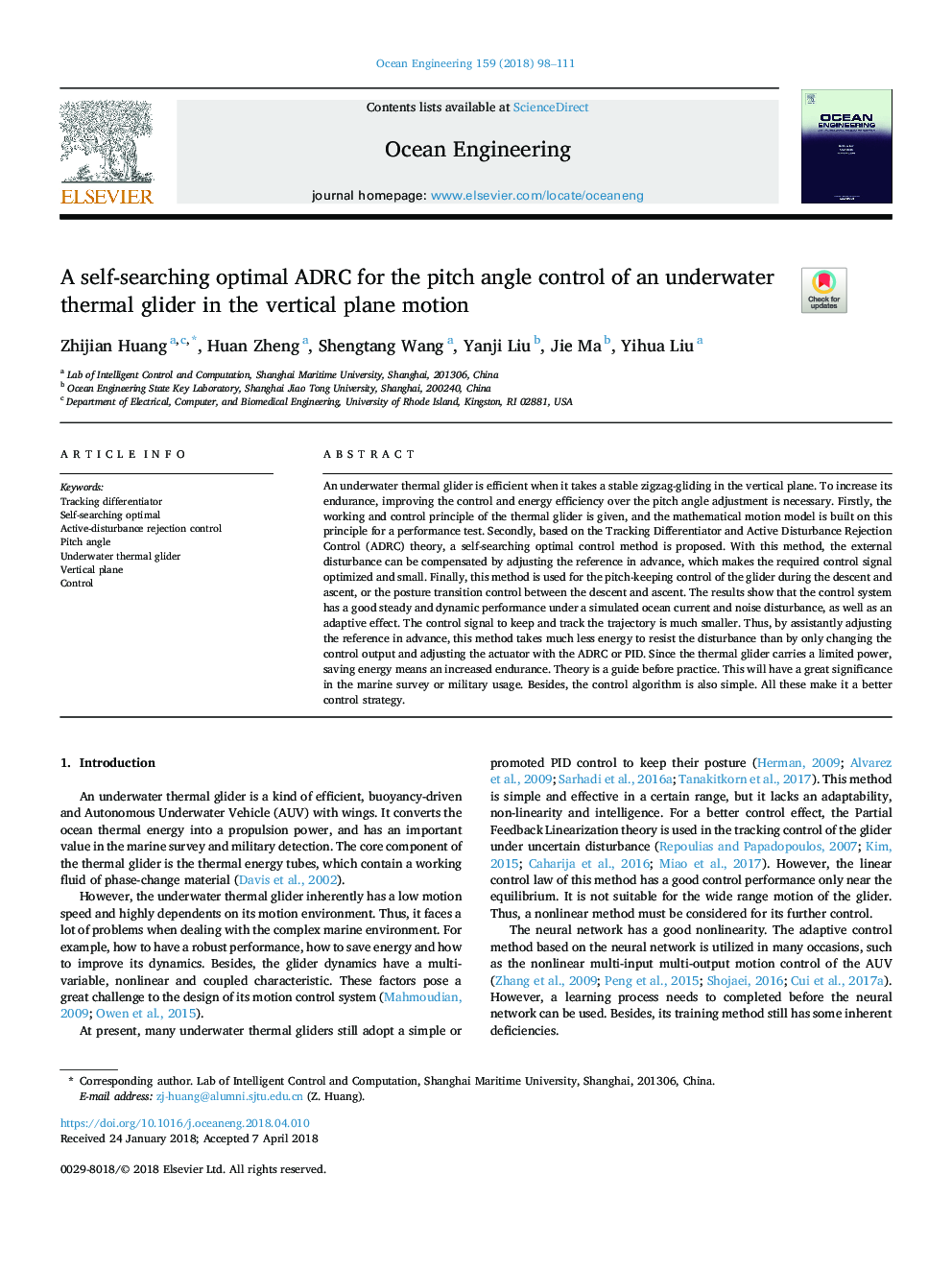| Article ID | Journal | Published Year | Pages | File Type |
|---|---|---|---|---|
| 8062309 | Ocean Engineering | 2018 | 14 Pages |
Abstract
An underwater thermal glider is efficient when it takes a stable zigzag-gliding in the vertical plane. To increase its endurance, improving the control and energy efficiency over the pitch angle adjustment is necessary. Firstly, the working and control principle of the thermal glider is given, and the mathematical motion model is built on this principle for a performance test. Secondly, based on the Tracking Differentiator and Active Disturbance Rejection Control (ADRC) theory, a self-searching optimal control method is proposed. With this method, the external disturbance can be compensated by adjusting the reference in advance, which makes the required control signal optimized and small. Finally, this method is used for the pitch-keeping control of the glider during the descent and ascent, or the posture transition control between the descent and ascent. The results show that the control system has a good steady and dynamic performance under a simulated ocean current and noise disturbance, as well as an adaptive effect. The control signal to keep and track the trajectory is much smaller. Thus, by assistantly adjusting the reference in advance, this method takes much less energy to resist the disturbance than by only changing the control output and adjusting the actuator with the ADRC or PID. Since the thermal glider carries a limited power, saving energy means an increased endurance. Theory is a guide before practice. This will have a great significance in the marine survey or military usage. Besides, the control algorithm is also simple. All these make it a better control strategy.
Related Topics
Physical Sciences and Engineering
Engineering
Ocean Engineering
Authors
Zhijian Huang, Yanji Liu, Huan Zheng, Shengtang Wang, Jie Ma, Yihua Liu,
